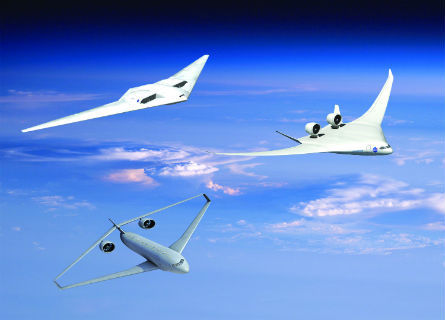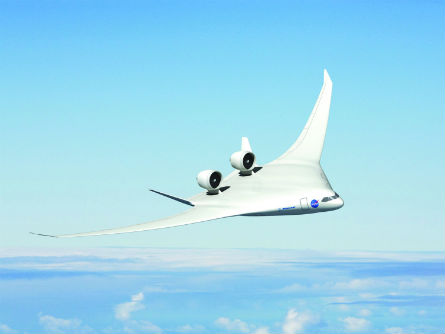It is not quite fair to suggest Dale Carlson wants to drive his employer, General Electric, out of the business of making gas turbines for aircraft, but it is not far off the mark either.
As GE's director of advanced engine systems, Carlson certainly has no disrespect for the achievement of the gas turbine engine.
It is, after all, the device responsible for a vast chunk of GE's accumulated wealth since 1941 - when the UK transferred Frank Whittle's W.1 jet engine to the American company.
Ever since, GE has remained for over 70 years at the forefront, steadily improving the gas turbine's opened-loop process - air compression, combustion and diffusion, which is known to thermodynamicists as the Brayton Cycle - and turning it into mankind's most efficient type of motor.
But Carlson says the day will come when GE will have to move beyond the thermodynamic architecture of the gas turbine as the primary source of thrust for most commercial and military aircraft.
"We're talking potentially 50-75 years from now when we're going to have to face the fact that the Brayton Cycle is going to run out of headroom," Carlson says.
THE TIME IS NOW
Anticipating propulsion technology for aircraft entering service after 2062 might seem premature to even some of his peers, but for Carlson - GE's designated "technology advocate" - it is not too early.
For the past year, Carlson has been calling attention in public forums to the need to start investing in propulsion technologies, such as pulse jets and hybrid turboelectric systems, that he considers are among the most likely candidates for replacing gas turbine engines for aircraft in the second half of the century.
"Given the long timelines of technology maturation, and the parallel if you will work with the [airworthiness] agencies and how do you certify [new technologies], it's not too early to start thinking about these things, at least in the preliminary design stage," Carlson says.
Propulsion technology matures slowly. About 30 years ago, engine makers proposed a new material - ceramic matrix composites (CMC) - for the turbine section of jet engines that can survive at higher temperatures. It then took the industry three decades to incorporate the first CMCs in a production unit, with the CFM Leap engine selected to power the Airbus A320neo, Bombardier CSeries, Irkut MS-21 and Mitsubishi Regional Jet.
If inserting CMCs into a conventional gas turbine takes 30 years to bring to fruition, integrating a propulsion system based on an entirely different thermodynamic process could take several decades longer.
 |
|---|
| NASA The next step in fuel efficiency may be possible only with different propulsion architecture |
According to Carlson's estimates, the industry is running out of time to get started.
Recent evidence suggests the "magic number" for launching a new aircraft programme requires at least a 15% improvement in fuel efficiency. That is roughly the number claimed by the CFM Leap and the Pratt & Whitney PW1000G geared turbofan (GTF). Each of those products is considered a high-bypass turbofan engine, which delivered the third major step change in fuel efficiency for the gas turbine since the early 1940s.
The axial-flow turbojet engine introduced in the early 1950s offered the first leap over Whittle's centrifugal flow engine. That was followed by the introduction of the low-bypass turbofan in the late 1960s.
STEP CHANGE NEEDED
"How many 15% [improvements] are left in the Brayton Cycle?" Carlson asks, rhetorically. "You begin to see where there's another, maybe another two, cycles where we can eke out a 15% improvement, but it won't go on indefinitely."
For a commercial airliner, there are essentially two ways to increase fuel efficiency within the Brayton Cycle process: turn up the heat inside the engine core and move a larger volume of air more slowly around the core.
The latter tool is a function of increasing the bypass ratio. Engine designers are already looking at introducing ducted fans after 2030 with bypass ratios of up to 25:1. By moving to an unducted fan, or open rotor, the bypass ratio can rise to 50:1.
Each step change could deliver a significant improvement in fuel efficiency using a Brayton Cycle-based propulsion system, although each increase could require a new airframe configuration.
Thermal efficiency is the other tool for engine makers to reduce fuel consumption. Modern engines burn fuel at temperatures that are beyond the melting point of the metal alloys in the flowpath of the heated air. The metal can survive because of a sophisticated cooling system, where air is extracted at cooler stages and channelled into the hotter sections.
The key to improving thermal efficiency is to eliminate the need to extract the air for cooling, and instead use the flow entirely for combustion. That requires engine makers to move to new materials, such as CMCs, for the entire flow-path.
"It shouldn't come as a surprise that there will be engines that might be 50% [comprised of] non-conventional materials by sometime in the 2030s," Carlson says. "That could have a tremendous impact."
As impressive as the next generation of gas turbines will be after 2030, it may not be enough to sustain the industry for more than two decades.
Fuel efficiency is not the only performance metric driving changes in propulsion technology. Environmental regulations are another major factor.
"Through ICAO, we've all signed a document by 2050 promising that we'll be 50% better on [carbon dioxide emissions, compared with a 2005 baseline]," Carlson says. "That's quite a substantial reduction in CO2. You know as well as I do that revenue miles double every 15 years. China is opening 50-100 airports over the next two decades. We're going to need to start looking at things differently."
To achieve the environmental targets of 2050, a NASA study involving GE has resulted in a proposal for a new kind of airframe with a very different kind of propulsion. The N3-X, unveiled in May 2011, proposes introducing a hybrid wing body aircraft powered by a turboelectric system with distributed propulsion.
 |
|---|
| NASA The N3-X proposal introduces a hybrid wing body aircraft powered by a turboelectronic system with distributed propulsion |
At each wingtip of the N3-X are two gas turbines that serve a very different purpose as compared with today's turbofan. Instead of producing thrust, the turbines drive superconducting generators for a 50MW-class electric grid embedded inside the aircraft. The motors, in turn, drive a series of 15 thrust-producing fans placed along the top of the aft fuselage of the airframe. It is the kind of airframe-propulsion concept that in theory could help the industry meet its environmental commitment.
There are, however, critics of the N3-X approach, especially with regard to the requirement for superconducting transmission lines between the turbine and the distributed propulsive fans.
"To make it light enough for aircraft, if you make it superconducting and take the magnetic shielding off, you might be able to lower the weight enough to be feasible," says Alan Epstein, vice-president of technology and environment for P&W.
"But by taking the shielding off, you're killing all the passengers," he adds.
THE SKY'S THE LIMIT
In a similar NASA study, P&W teamed up with the Massachusetts Institute of Technology to propose a hybrid-wing body powered by geared turbofans that are integrated above the fuselage, where they ingest the boundary layer airflow, Epstein says. Ingesting the boundary layer significantly reduces the airframe's wake as it moves through the air, reducing drag and improving fuel efficiency.
Even one of GE's partners is sceptical that it is necessary to consider other forms of propulsion than the gas turbine.
Jean-Paul Ebanga, chief executive of CFM International, recalls that the gas turbine industry thought it had reached the limit of the Brayton Cycle's potential efficiency in the late 1960s, as temperatures inside the core reached the melting point of the metallic blades and components.
"And then a couple of guys found some outstanding ideas about the cooling of the blade, which really leap-frogged the barrier because now we are able to operate the high-pressure turbine at a temperature higher than the melting point of the metal," Ebanga says. "I am pretty confident that we are only at the middle of the story."
Web note. Web address is a character style. The text box is set up to align on baseline. Needs to be 3 lines of text. flightglobal.com
Source: Flight International























